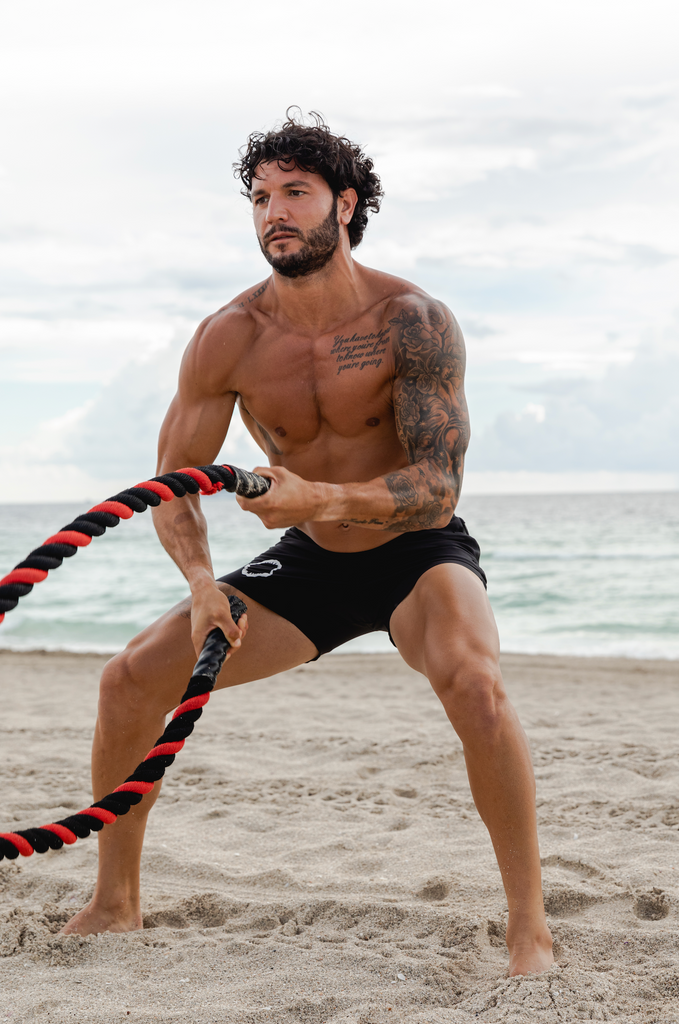There are plenty of arm workouts out there – they're practically the bread and butter of the fitness world. But there isn't a lot specifically said about the forearm, aka the muscle that flexes the wrist and fingers. Well, that's all about to change, as we tapped the minds of fitness gurus for their expertise on this often overlooked muscle.
So, grab your Vital Performance™ PRE and get ready to arm yourself with some serious info about forearm workouts!
Vital Note: This article has been made available for informational and educational purposes only. It is not intended to be a substitute for professional medical advice, diagnosis, or treatment. Always seek the advice of your physician or another qualified health provider with any questions you may have regarding a medical condition. Your licensed healthcare professional can best provide you with the diagnosis and treatment of any medical condition and assist you as well in deciding whether a dietary supplement will be a helpful addition to your regimen.

How can I increase my forearm size?
Looking to increase forearm size, stat? Start with a wrist roller. "Wrist rollers are performed by reeling a weight up and down on a spool," says Robert Herbst, 19-time World Champion powerlifter and wellness and weight loss expert.
Steven Whitehead, Owner of Elite Athletics Training and Co-Owner of Pro Trusted, adds that it can be used in a variety of ways, such as forward and backward rotations or simply holding for time: "It's also best to control the time under tension in a slow and controlled manner, as this will help build mass in the forearms."
If you don’t have a wrist roller, you can go the DIY route. "Grab yourself some towels and tape or attach it to a laundry detergent bottle, milk jug or dumbbells to put the focus on the grip strength and forearms," says Whitehead.
Similarly, certified personal trainer Stephanie Rofkahr recommends creating your own using a weight plate and rope. "You take a rope and put a plate at the end of it and twist the rope up until it completely stops," she tells Lively. "This is a great at-home workout for the forearms!"
If you're looking to increase forearm size the traditional way (i.e. through weights), there are plenty of exercises to choose from. According to Michael Slowak, certified personal trainer and Co-Founder of Boxingholic.com, this includes bar hangs, chin-ups, wide grip curl, reverse curl, plate pinch hold and behind-the-back cable curl. Select exercises are listed in the glossary below.
"Do at least three different forearm exercises two times per week with three sets for each one and you're bound to see growth." Don't forget about the forearm curls, either: "When you rotate downwards on a bicep curl, you are using your forearms," Rofkahr tells Lively.
How do I make my forearms bigger at home?
No gym, no problem. There are tons of exercises that answer the question of "how do I make my forearms bigger at home?" For starters, Sergio Pedemonte, certified personal trainer and CEO of Your House Fitness, recommends making use of something you probably already have in your cupboard: cans. Here's how to use them for your forearms:
- Start with 1 or 2 cans.
- Place hands on the can as wide as you can.
- Hold for 15-30 seconds.
- Rest for 30-45 seconds and repeat two times.
"This is an isometric exercise," explains Pedemonte. "The muscles do not lengthen or shorten. They stay contracted at all times." Additional exercises that increase forearm mass right at home include crab walks, farmer's walk and a hex bar deadlift.
Building forearm size also has a lot to do with grip strength, says kuudose Founding Celebrity Trainer, Joey Thurman, CPT, CES, FNS: "Squeeze your fist as hard as you can right now. What do you feel? Chances are you feel your forearm abs brachioradialis muscle contracting."
Get a grip on increasing those forearms by trying these exercises: tennis ball squeeze, fat grip curls and reverse grip curls.

Your Workout Glossary
Tennis Ball Squeeze
Grab a tennis ball or a hand grip and squeeze as many times as you can on one side and then switch sides and match the number of reps.
Fat Grip Curls
Buy big grips to go around dumbbells or a bar or wrap a towel around a bar to make the grip bigger. Curl normally.
Reverse Grip Curls
Curl with your palms facing down and curl the back of your hand towards your shoulders. Control slowly down and go to form failure.
Weighted Pinch Hold
Position yourself with your back straight and bend your elbows 90 degrees, as if you're typing on your computer. Then, pinch a weighted object in each of your hands. If you have weighted plates, even better.
But if not, find any pinchable object that's heavy enough for you. Then, with the back of your hands toward the ceiling, bend your wrists upwards without moving your elbows or shoulders. Make sure you raise your hand fast and then go down slowly.
Crab Walk
Sit on the ground and do a bridge so that your entire body looks like a tabletop. Walk like this for three sets with each set walking about 15 meters. If you need to make it harder, you can strap a backpack on your chest with weights in it.
Wrist Curls
Hold a dumbbell (or barbell with two hands) with a supinated grip with your forearm resting on your thighs. Lower the weight by bending your hand down and unfolding your fingers. Curl the weight up in your hands as high as you can, contracting the muscles of your forearm at the top. That is one rep. Then, lower the weight for the next rep.
Reverse Wrist Curls
These are similar to wrist curls, except that the hand is pronated. Cock your hand up at the wrist and lower it to do one rep.













